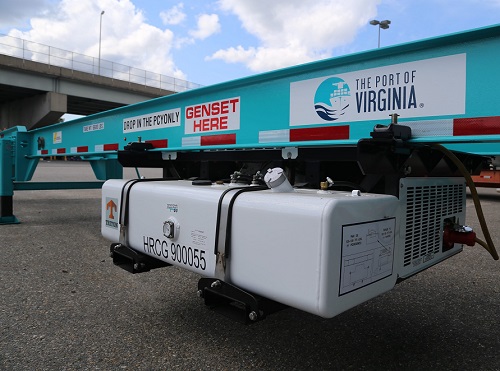The Federal Highway Administration has issued a notice of funding opportunity for the first round of a new $400 million grant program focused on port electrification and efficiency improvements.
[Above photo by the Virginia Port Association]
The fiscal year 2022-2023 funding available for the first round of Reduction of Truck Emissions at Port Facilities program totals $160 million, FHWA said, with grants focused on projects that reduce emissions from idling trucks at our nation’s ports, which negatively impacts air quality for surrounding communities, including small children, truck drivers, and port workers.
“This new competitive grant program will modernize and update our nation’s port system by helping to combat a notorious source of air pollution,” noted FHWA Administrator Shailen Bhatt in a statement.
“Reducing the impact that truck emissions have on neighboring communities will help improve the health and wellbeing of port workers, truck drivers, and families who live nearby,” he added.
[Editor’s note: The American Association of State Highway and Transportation Officials hosted a knowledge session during its 2023 Washington Briefing that explored the ways states are seeking to “de-carbonize” their transportation systems, including ports and related facilities.]
The agency added that this new grant program is part of President Biden’s “Justice40” initiative, which aims to ensure that 40 percent of the overall benefits of certain federal investments flow to “disadvantaged communities” that are “marginalized, underserved, and overburdened” by pollution.
The FHWA said it seeks to fund projects that reduce truck emissions in communities adjacent to ports. Eligible project activities include:
- The development of port-related infrastructure that reduces emissions from port-related truck idling;
- On-truck technologies that reduce emissions from port-related truck idling;
- The use of zero or low emissions powertrains or fuels on trucks;
- Reducing truck congestion within or adjacent to ports, including through enhanced intermodal rail connections; and
- Reducing port-related emissions from idling trucks, including through port electrification and improving the efficiency of port operations.
 Nation
Nation
Registration Open for AASHTO’s Winter Rail Meeting
December 19, 2025 Nation
Nation

